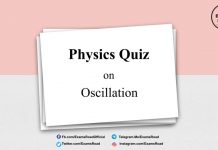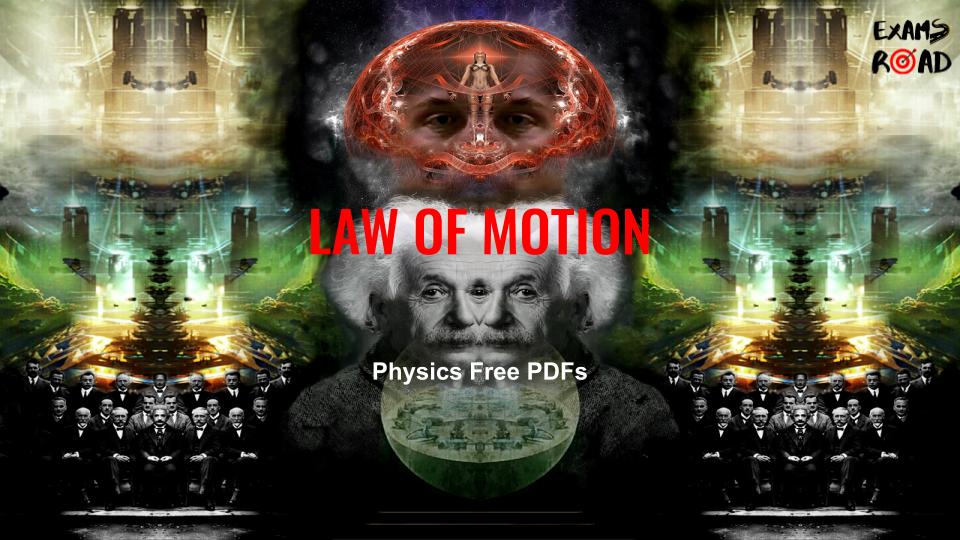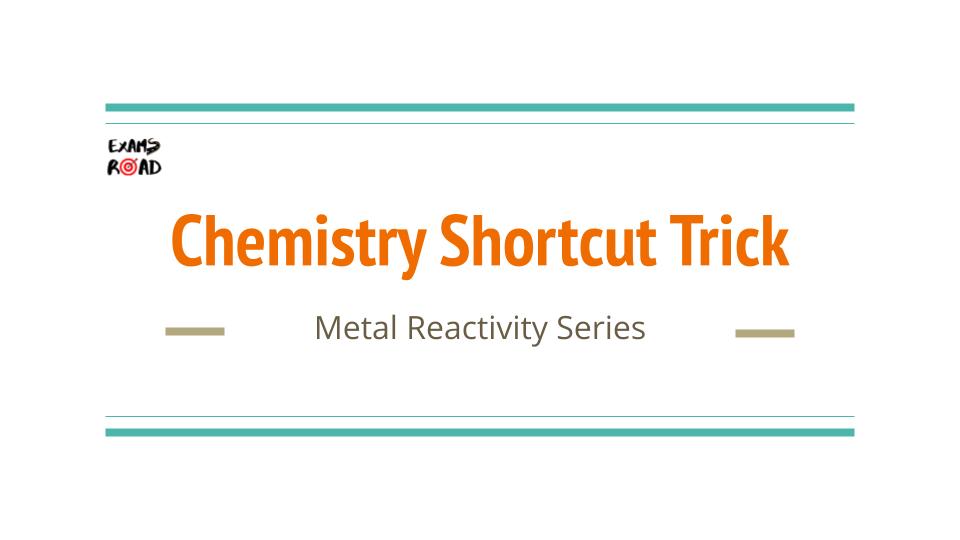Complete Chemistry Syllabus for NEET AIIMS (Topicwise) 2024
The National Eligibility cum Entrance Test (NEET) is a highly competitive examination in India for students aspiring to pursue undergraduate medical and dental courses. Chemistry is an integral part of the NEET syllabus, covering a broad range of topics.
In this article, we will provide a complete overview of the chemistry syllabus for the NEET exam, highlighting the key topics in each category.
-
Physical Chemistry: Physical Chemistry focuses on the principles and concepts underlying chemical reactions and the behavior of matter. The key topics within this domain include:
a. Some Basic Concepts of Chemistry: Laws of chemical combinations, mole concept, stoichiometry, atomic and molecular masses, and Avogadro’s number.
b. Structure of Atoms and Molecules: Atomic structure, quantum numbers, electronic configurations, periodic trends, chemical bonding, and molecular geometry.
c. Thermodynamics: Laws of thermodynamics, enthalpy, entropy, Gibbs free energy, and spontaneity of reactions.
d. Equilibrium: Chemical equilibrium, Le Chatelier’s principle, equilibrium constants, and factors affecting equilibrium.
e. Redox Reactions and Electrochemistry: Balancing redox reactions, electrochemical cells, Nernst equation, and corrosion.
f. Chemical Kinetics: Rate of reaction, rate laws, order of reaction, activation energy, and factors influencing reaction rates.
g. Surface Chemistry: Adsorption, colloids, emulsions, and catalysis.
-
Organic Chemistry: Organic Chemistry deals with the structure, properties, composition, reactions, and synthesis of organic compounds. Key topics include:
a. Basic Principles of Organic Chemistry: Bonding in organic compounds, nomenclature, isomerism, and electronic effects.
b. Hydrocarbons: Alkanes, alkenes, alkynes, aromatic hydrocarbons, and their reactions.
c. Haloalkanes and Haloarenes: Nomenclature, preparation, properties, and reactions of halogenated compounds.
d. Alcohols, Phenols, and Ethers: Nomenclature, preparation, properties, and reactions of alcohols, phenols, and ethers.
e. Aldehydes and Ketones: Nomenclature, preparation, properties, and reactions of aldehydes and ketones.
f. Carboxylic Acids and their Derivatives: Nomenclature, preparation, properties, and reactions of carboxylic acids, esters, amides, and acid halides.
g. Amines: Nomenclature, preparation, properties, and reactions of amines.
h. Biomolecules: Carbohydrates, proteins, nucleic acids, lipids, and their structures and functions.
i. Polymers: Classification, properties, and reactions of polymers.
j. Chemistry in Everyday Life: Drugs, pharmaceuticals, and chemicals used in daily life.
-
Inorganic Chemistry: Inorganic Chemistry focuses on the study of elements, compounds, and materials that are not primarily carbon-based. Key topics include:
a. Classification of Elements and Periodicity: Periodic table trends, electronic configurations, and chemical properties of elements.
b. Chemical Bonding and Molecular Structure: Lewis structures, VSEPR theory, hybridization, and shapes of molecules.
c. s-Block Elements: Alkali metals and alkaline earth metals, their properties, compounds, and important reactions.
d. p-Block Elements: Group 13 to 18 elements, their properties, compounds, and important reactions.
e. d-Block and f-Block Elements: Transition metals, their properties, coordination compounds, and metallurgy.
f. Coordination Compounds: Nomenclature, isomerism, bonding, and stability of coordination compounds.
g. Environmental Chemistry: Environmental pollution, pollutants, ozone depletion, and greenhouse effect.
What is the Topic-wise Syllabus for NEET Chemistry Exam 2024 ?
This question must be coming in the mind of NEET Exam aspirants. So here we have shortlisted the detailed topicwise syllabus for NEET exam Chemistry section. In this article we have provided the topic wise weightage of marks so that student can get the exact idea that which topic is more important in exam.
Student can also download the Chemistry section syllabus PDF for NEET exam from below link that is provided at the end of article.
| CHEMISTRY TOPICS COVERED IN CLASS XI | ||
| Class XI | Details | |
| Some Basic Concepts of Chemistry | 1% | General Introduction: Important and scope of chemistry. Laws of chemical combination, Dalton’s atomic theory: concept of elements, atoms and molecules. Atomic and molecular masses. Mole concept and molar mass; percentage composition and empirical and molecular formula; chemical reactions, stoichiometry and calculations based on stoichiometry. |
| Structure of Atom | 2% | Atomic number, isotopes and isobars. Concept of shells and subshells, dual nature of matter and light, de Broglie’s relationship, Heisenberg uncertainty principle, concept of orbital, quantum numbers, shapes of s,p and d orbitals, rules for filling electrons in orbitals- Aufbau principle, Pauli exclusion principles and Hund’s rule, electronic configuration of atoms, stability of half filled and completely filled orbitals. |
| Classification of Elements and Periodicity in Properties | 2% | Modern periodic law and long form of periodic table, periodic trends in properties of elements- atomic radii, ionic radii, ionization enthalpy, electron gain enthalpy, electronegativity, valence. |
| Chemical Bonding and Molecular Structure | 5% | Valence electrons, ionic bond, covalent bond, bond parameters, Lewis structure, polar character of covalent bond, valence bond theory, resonance, geometry of molecules, VSEPR theory, concept of hybridization involving s, p and d orbitals and shapes of some simple molecules, molecular orbital theory of homonuclear diatomic molecules (qualitative idea only). Hydrogen bond. |
| States of Matter: Gases and Liquids | 2% | Three states of matter, intermolecular interactions, types of bonding, melting and boiling points, role of gas laws of elucidating the concept of the molecule, Boyle’s law, Charle’s law, Gay Lussac’s law, Avogadro’s law, ideal behaviour of gases, empirical derivation of gas equation. Avogadro number, ideal gas equation. Kinetic energy and molecular speeds (elementary idea), deviation from ideal behaviour, liquefaction of gases, critical temperature. Liquid State- Vapour pressure, viscosity and surface tension (qualitative idea only, no mathematical derivations). |
| Thermodynamics | 8% | First law of thermodynamics-internal energy and enthalpy, heat capacity and specific heat, measurement of U and H, Hess’s law of constant heat summation, enthalpy of : bond dissociation, combustion, formation, atomization, sublimation, phase transition, ionization, solution and dilution. Introduction of entropy as state function, Second law of thermodynamics, Gibbs energy change for spontaneous and non-spontaneous process, criteria for equilibrium and spontaneity. Third law of thermodynamics- Brief introduction. |
| Equilibrium | 6% | Equilibrium in physical and chemical processes, dynamic nature of equilibrium, law of chemical equilibrium, equilibrium constant, factors affecting equilibrium- Le Chatelier’s principle; ionic equilibrium- ionization of acids and bases, strong and weak electrolytes, degree of ionization, ionization of polybasic acids, acid strength, concept of pH., Hydrolysis of salts (elementary idea)., buffer solutions, Henderson equation, solubility product, common ion effect (with illustrative examples). |
| Redox Reactions | 3% | Concept of oxidation and oxidation and reduction, redox reactions oxidation number, balancing redox reactions in terms of loss and gain of electron and change in oxidation numbers. |
| Hydrogen | Occurrence, isotopes, preparation, properties and uses of hydrogen; hydridesionic, covalent and interstitial; physical and chemical properties of water, heavy water; hydrogen peroxide-preparation, reactions, uses and structure; |
|
| S-Block Element (Alkali and Alkaline earth metals) | 2% | Group I and group 2 elements General introduction, electronic configuration, occurrence, anomalous properties of the first element of each group, diagonal relationship, trends in the variation of properties (such as ionization enthalpy, atomic and ionic radii), trends in chemical reactivity with oxygen, water, hydrogen and halogens; uses. Preparation and Properties of Some important Compounds: Sodium carbonate, sodium chloride, sodium hydroxide and sodium hydrogencarbonate, biological importance of sodium and potassium. Industrial use of lime and limestone, biological importance of Mg and Ca. |
| Some p-Block Elements | 2% | General Introduction to p-Block Elements. Group 13 elements: General introduction, electronic configuration, occurrence, variation of properties, oxidation states, trends in chemical reactivity, anomalous properties of first element of the group; Boron, some important compounds: borax, boric acids, Boron hydrides. Aluminium: uses, reactions with acids and alkalies. General 14 elements: General introduction, electronic configuration, occurrence, variation of properties, oxidation states, trends in chemical reactivity, anomalous behaviour of first element. Carbon, allotropic forms, physical and chemical properties: uses of some important compounds: oxides. Important compounds of silicon and a few uses: silicon tetrachloride, silicones, silicates and zeolites, their uses. |
| Organic Chemistry- Some Basic Principles and Techniques | 4% | General introduction, methods of purification qualitative and quantitative analysis, classification and IUPAC nomenclature of organic compounds. Electronic displacements in a covalent bond: inductive effect, electromeric effect, resonance and hyper conjugation. Homolytic and heterolytic fission of a covalent bond: free radials, carbocations, carbanions; electrophiles and nucleophiles, types of organic reactions. |
| Hydrocarbons | 3% | Alkanes- Nomenclature, isomerism, conformations (ethane only), physical properties, chemical reactions including free radical mechanism of halogenation, combustion and pyrolysis. Alkenes-Nomenclature, structure of double bond (ethene), geometrical isomerism, physical properties, methods of preparation: chemical reactions: addition of hydrogen, halogen, water, hydrogen halides (Markovnikov’s addition and peroxide effect), ozonolysis, oxidation, mechanism of electrophilic addition. Alkynes-Nomenclature, structure of triple bond (ethyne), physical properties, methods of preparation, chemical reactions: acidic character of alkynes, addition reaction of- hydrogen, halogens, hydrogen halides and water. Aromatic hydrocarbons- Introduction, IUPAC nomenclature; Benzene; resonance, aromaticity; chemical properties: mechanism of electrophilic substitution- Nitration sulphonation, halogenation, Friedel Craft’s alkylation and acylation; directive influence of functional group in mono-substituted benzene; carcinogenicity and toxicity. |
| Environmental Chemistry | 2% | Environmental pollution: Air, water and soil pollution, chemical reactions in atmosphere, smogs, major atmospheric pollutants; acid rain ozone and its reactions, effects of depletion of ozone layer, greenhouse effect and global warming-pollution due to industrial wastes; green chemistry as an alternative tool for reducing pollution, strategy for control of environmental pollution. |
| CHEMISTRY TOPICS COVERED IN CLASS XII | ||
| Class XII | Weightage* | Details |
| Solid State | 2% | Classification of solids based on different binding forces; molecular, ionic covalent and metallic solids, amorphous and crystalline solids (elementary idea), unit cell in two dimensional and three dimensional lattices, calculation of density of unit cell, packing in solids, packing efficiency, voids, number of atoms per unit cell in a cubic unit cell, point defects, electrical and magnetic properties, Band theory of metals, conductors, semiconductors and insulators. |
| Solutions | 5% | Types of solutions, expression of concentration of solutions of solids in liquids, solubility of gases in liquids, solid solutions, colligative properties- relative lowering of vapour pressure, Raoult’s law, elevation of boiling point, depression of freezing point, osmotic pressure, determination of molecular masses using colligative properties abnormal molecular mass. Van Hoff factor. |
| Electrochemistry | 2% | Redox reactions, conductance in electrolytic solutions, specific and molar conductivity variation of conductivity with concentration, kohlrausch’s Law, electrolysis and Laws of electrolysis (elementary idea), dry cell- electrolytic cells and Galvanic cells; lead accumulator, EMF of a cell, standard electrode potential, Relation between Gibbs energy change and EMF of a cell, fuel cells; corrosion. |
| Chemical Kinetics | 3% | Rate of a reaction (average and instantaneous), factors affecting rates of reaction; concentration, temperature, catalyst; order and molecularity of a reaction; rate law and specific rate constant, integrated rate equations and half life (only for zero and first order reactions); concept of collision theory ( elementary idea, no mathematical treatment). Activation energy, Arrhenious equation. |
| Surface Chemistry | 2% | Adsorption-physisorption and chemisorption; factors affecting adsorption of gases on solids, catalysis homogeneous and heterogeneous, activity and selectivity: enzyme catalysis; colloidal state: distinction between true solutions, colloids and suspensions; lyophillic, lyophobic multimolecular and macromolecular colloids; properties of colloids; Tyndall effect, Brownian movement, electrophoresis, coagulation; emulsions- types of emulsions. |
| General Principles and Processes of Isolation of Elements | 2% | Principles and methods of extraction- concentration, oxidation, reduction electrolytic method and refining; occurrence and principles of extraction of aluminium, copper, zinc and iron. |
| P- Block Elements | 5% | Group 15 elements: General introduction, electronic configuration, occurrence, oxidation states, trends in physical and chemical properties; preparation and properties of ammonia and nitric acid, oxides of nitrogen (structure only); Phosphorous- allotropic forms; compounds of phosphorous: preparation and properties of phosphine, halides (PCI3, PCI5) and oxoacids (elementary idea only). Group 16 elements: General introduction, electronic configuration, oxidation states, occurrence, trends in physical and chemical properties; dioxygen: preparation, properties and uses; classification of oxides; ozone. Sulphur – allotropic forms; compounds of sulphur: preparation, preparation, properties and uses of sulphur dioxide; sulphuric acid: industrial process of manufacture, properties and uses, oxoacids of sulphur (structures only). Group 17 elements: General introduction, electronic configuration, oxidation states, occurrence, trends in physical and chemical properties; compounds of halogens: preparation, properties and uses of chlorine and hydrochloric acid, interhalogen compounds oxoacids of halogens (structures only). Group 18 elements: General introduction, electronic configuration, occurrence, trends in physical and chemical properties, uses. |
| d and f Block Elements | 4% | General introduction, electronic configuration, characteristics of transition metals, general trends in properties of the first row transition metals- metallic character, ionization enthalpy, oxidation states, ionic radii, colour, catalytic property, magnetic properties, interstitial compounds, alloy formation. Preparation and properties of K2Cr2O7 and KMnO4. Lanthanoids- electronic configuration, oxidation states, chemical reactivity, and lanthanoid contraction and its consequences. Actinoids: Electronic configuration, oxidation states and comparison with lanthanoids. |
| Coordination Compounds | 9% | Coordination compounds: Introduction, ligands, coordination number, colour, magnetic properties and shapes, IUPAC nomenclature of mononuclear coordination compounds, isomerism (structural and stereo) bonding, Werner’s theory VBT,CFT; importance of coordination compounds (in qualitative analysis, biological systems). |
| Haloalkanes and Haloarenes | 3% | Haloalkanes: Nomenclature, nature of C –X bond, physical and chemical properties, mechanism of substitution reactions. Optical rotation. Haloarenes: Nature of C-X bond, substitution reactions (directive influence of halogen for monosubstituted compounds only). Uses and environment effects of – dichloromethane, trichloromethane, tetrachloromethane, iodoform, freons, DDT. |
| Alcohols, Phenols, and Ethers | 4% | Alcohols: Nomenclature, methods of preparation, physical and chemical properties (of primary alcohols only); identification of primary, secondary and tertiary alcohols; mechanism of dehydration, uses with special reference to methanol and ethanol. Phenols: Nomenclature, methods of preparation, physical and chemical properties, acidic nature of phenol, electrophillic substitution reactions, uses of phenols. Ethers: Nomenclature, methods of preparation, physical and chemical properties uses. |
| Aldehydes, Ketones and Carboxylic Acids | 4% | Aldehydes and Ketones: Nomenclature, nature of carbonyl group, methods of preparation, physical and chemical properties; and mechanism of nucleophilic addition, reactivity of alpha hydrogen in aldehydes; uses. Carboxylic Acids: Nomenclature, acidic nature, methods of preparation, physical and chemical properties; uses. |
| Organic Compounds Containing Nitrogen | 2% | Amines: Nomenclature, classification, structure, methods of preparation, physical and chemical properties, uses, identification of primary secondary and tertiary amines. Cyanides and Isocyanides- will be mentioned at relevant places. Diazonium salts: Preparation, chemical reactions and importance in synthetic organic chemistry. |
| Biomolecules | 3% | Carbohydrates- Classification (aldoses and ketoses), monosaccharide (glucose and fructose), D.L. configuration, oligosaccharides (sucrose, lactose, maltose), polysaccharides (starch, cellulose, glycogen): importance. Proteins- Elementary idea of – amino acids, peptide bond, polypeptides, proteins, primary structure, secondary structure, tertiary structure and quaternary structure (qualitative idea only), denaturation of proteins; enzymes. Hormones- Elementary idea (excluding structure). Vitamins- Classification and function. Nucleic Acids: DNA and RNA |
| Polymers | 3% | Classification- Natural and synthetic, methods of polymerization (addition and condensation), copolymerization. Some important polymers: natural and synthetic like polyesters, bakelite; rubber, Biodegradable and non-biodegradable polymers. |
| Chemistry in Everyday Life | 2% | Chemicals in medicines- analgesics, tranquilizers, antiseptics, disinfectants, antimicrobials, antifertility drugs, antibiotics, antacids, antihistamines. Chemicals in food- preservatives, artificial sweetening agents, elementary idea of antioxidants. Cleansing agents- soaps and detergents, cleansing action. |
Preparation Strategies:
- Understand Concepts: Develop a strong conceptual understanding of each topic by referring to standard textbooks, online resources, and study materials.
- Practice Regularly: Solve a wide range of practice questions and previous year’s NEET exam papers to familiarize yourself with the question patterns and improve problem-solving skills.
- Create a Study Schedule: Plan your study schedule in a structured manner, allocating sufficient time to each topic based on its weightage in the exam.
- Take Mock Tests: Regularly take mock tests to assess your knowledge, identify weaknesses, and improve time management skills.
- Revision: Dedicate time for revision to consolidate your learning and ensure better retention of important concepts.
- Seek Clarification: If you come across any doubts or difficulties, seek clarification from teachers, mentors, or online platforms to strengthen your understanding.
In conclusion, a thorough understanding of the complete chemistry syllabus for the NEET exam is essential for success. By following a systematic study plan, practicing extensively, and seeking clarification when needed, you can effectively prepare for the chemistry section and increase your chances of achieving a high score in the NEET exam.
Please share and support us.
ExamsRoad.com
“Bringing Excellence To Students”
| Complete Subject-Wise NEET Exam Syllabus | |
| Physics Syllabus for NEET AIIMS | Click Here |
| Chemistry Syllabus for NEET AIIMS | Click Here |
| Biology Syllabus for NEET AIIMS | Click Here |








![100+ MCQs on Atomic Structure PDF – Free Objective Question & Answers [Chemistry NEET JEE] MCQs on Atomic Structure PDF](https://examsroad.com/wp-content/uploads/2023/06/MCQs-on-Atomic-Structure-PDF-100x70.jpg)










